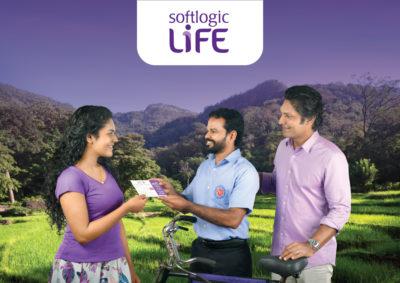April 9, 2021
Digitalisation, healthcare and climate risk are key topics in inclusive insurance
Last year, Finnfund made its first investment in the insurance sector by providing a USD 7.5 million loan to Softlogic Life Insurance PLC in Sri Lanka. I remember participating the onsite Due Diligence the last week of February 2020 very well, as it turned out to be my last business trip for a while. The travel restrictions that were set to prevent the spread of COVID-19 virus were imposed in March 2020.
Pandemic threatens the livelihood of the poor around the world. The World Bank estimates that COVID-19 could push 150 million more people into extreme poverty. Many low-income households lack access to formal safety nets and are highly vulnerable to shocks such as death of the breadwinner, illness, and disease. Access to insurance is known to fight poverty by preventing families from falling into poverty after facing a material or health related adverse occurrence. However, insurance remains scarcely available globally. Out of the 5.4 billion emerging consumers worldwide, only about 500 million have any kind of insurance to protect them against daily and catastrophic risks.
While the pandemic highlights the need for a more widespread insurance cover in the world, Finnfund is devoted to increasing the insurance coverage in the emerging markets through its investments.
What’s new? Challenges, solutions and key topics around inclusive insurance
We talk about inclusive insurance or microinsurance which refers to the appropriate, accessible and affordable insurance products for the unserved and underserved, with an emphasis on vulnerable and low-income populations. MSMEs are also an important, underserved target group for inclusive insurance.
During the lockdown, I have dived into the word of inclusive insurance by readings and attending conferences and webinars. I would like to share some insights about the key topics in the inclusive insurance arena:
 Digitalisation vs. human touch
Digitalisation vs. human touch
One of the key barriers to inclusive insurance is a lack of cost-effective distribution channels. Digitalisation and mobile technology can make insurance products more accessible and affordable to consumers. The evidence from Ghana shows that 65% of inclusive insurance products in the country are already being sold via mobile insurance.
Nevertheless, while digitalisation is becoming increasingly important, human touch remains crucial in microinsurance distribution. Insurance agents or brokers have an important role in educating customers about the benefits and limitations of insurance.
Healthcare
The pandemic has increased the awareness of health risks. Even before COVID-19, low-cost health products, particularly hospital cash, have become a key microinsurance offering along with life and credit life products. These products are attractive because they are relatively straightforward to administer. Hospital cash gives the insured a cash compensation in case of hospitalization, protecting the insured against the loss of income during hospitalization. Also cashless health services are popular, as we have seen with our investments in Softlogic Life and Kashf Foundation in Pakistan. Both companies offer micro health insurance products through which the insured can get cashless services for treatment at the panel hospitals.
Climate risk insurance
Inclusive insurers are focusing more and more on climate risk insurance. Insurance can help vulnerable populations to manage and mitigate the impacts of climate change. Index insurance or parametric insurance is a non-traditional insurance product, that can be used to mitigate the impact of natural disasters, such as cyclones, floods or drought.
While insurance typically covers the actual loss incurred of an incident, index insurance or parametric insurance covers payouts that are based upon a trigger event rather than actual loss. A Kenya Livestock Insurance Programme for example uses satellite-based index insurance to protect pastoralists in remote areas. Satellites assess the state of the grazing conditions by measuring the colour of the ground. Once a certain threshold is reached the insured automatically receives a lump sum payment, allowing them to provide their livestock with feed and water, to survive. The benefit of this type of an insurance is that an insurance company does not need to conduct pre-inspections or to assess individual losses, which is time-consuming and costly.
I am inspired about how these examples help to overcome some of the barriers to microinsurance, and would love to learn about other innovative insurance solutions. Insurance companies, insurtechs, investors – I look forward hearing from you!
Ulla-Maija Rantapuska
Investment Manager
Finnfund promotes financial inclusion through investing in selected financial service providers including for example commercial banks, inclusive insurance and financial innovations. Read more about our investments in financial institutions.
